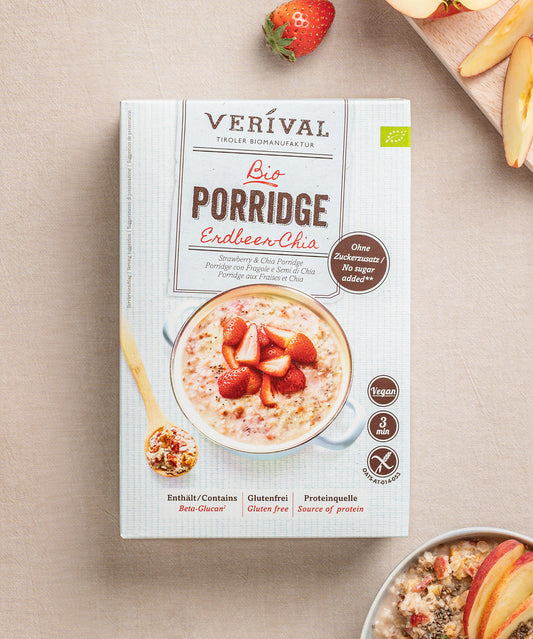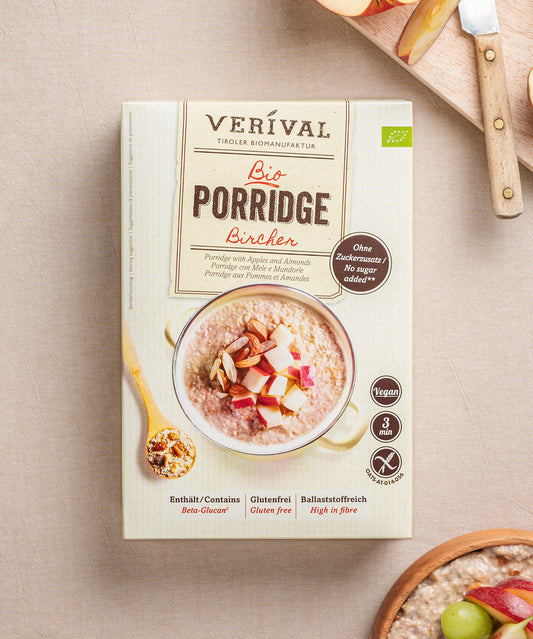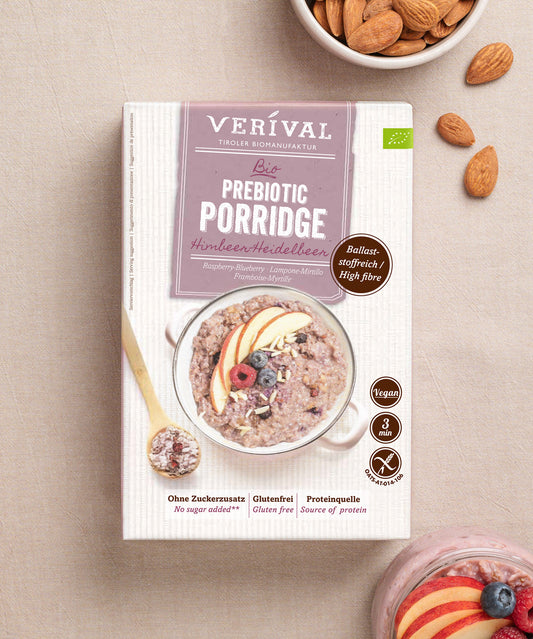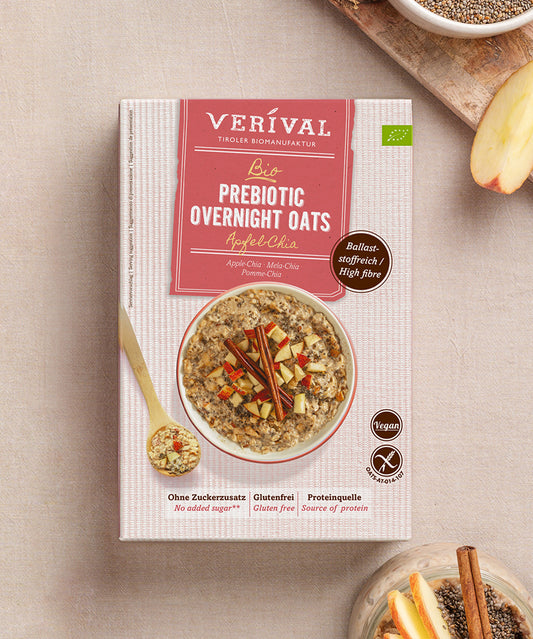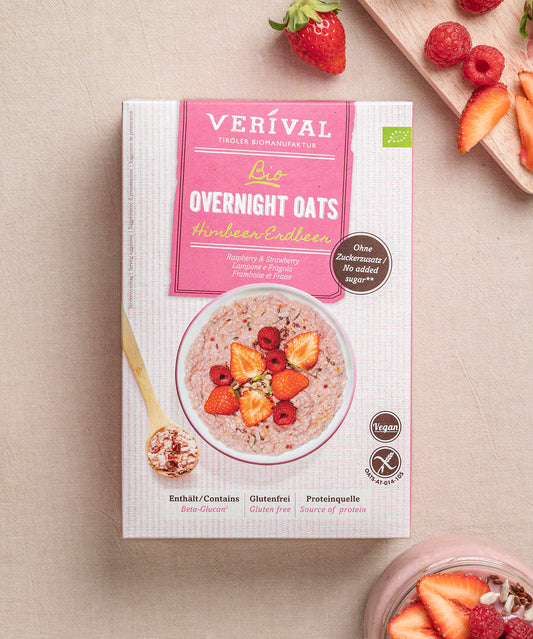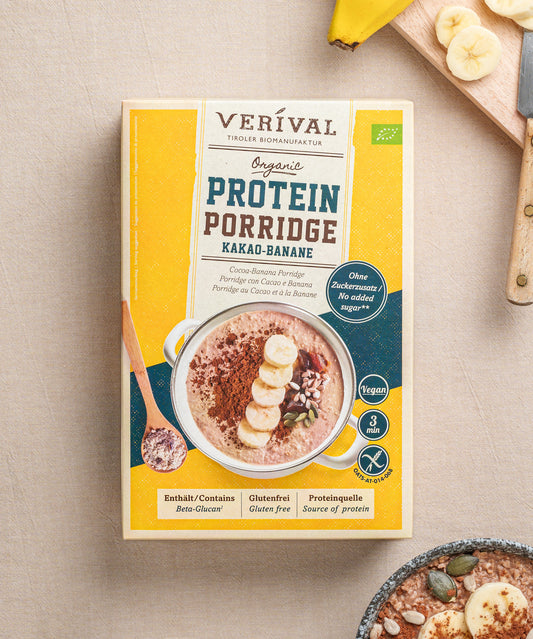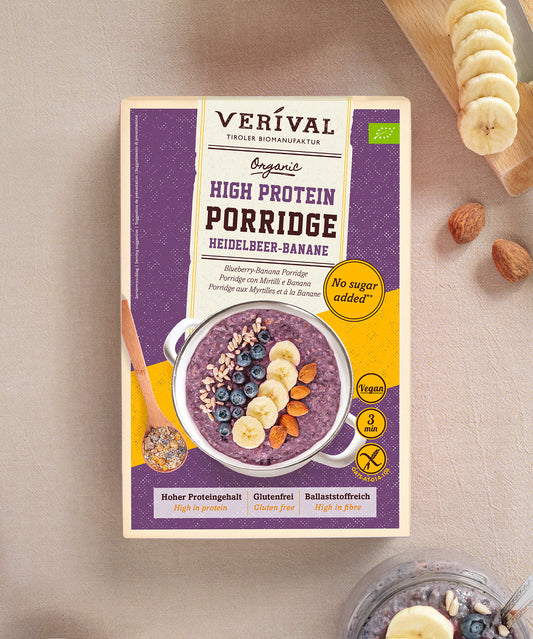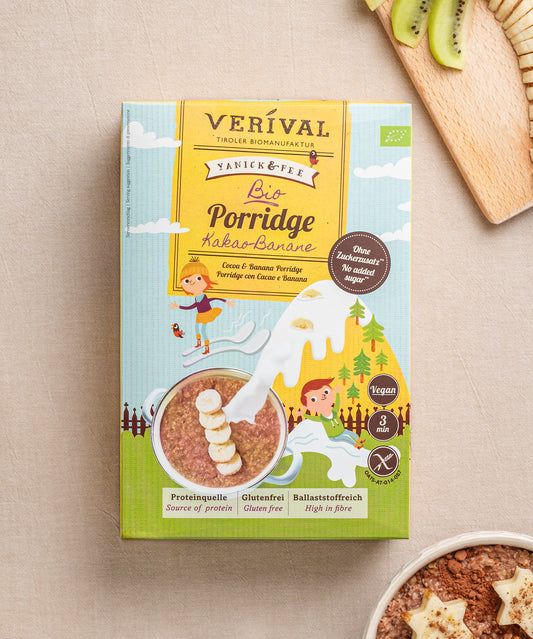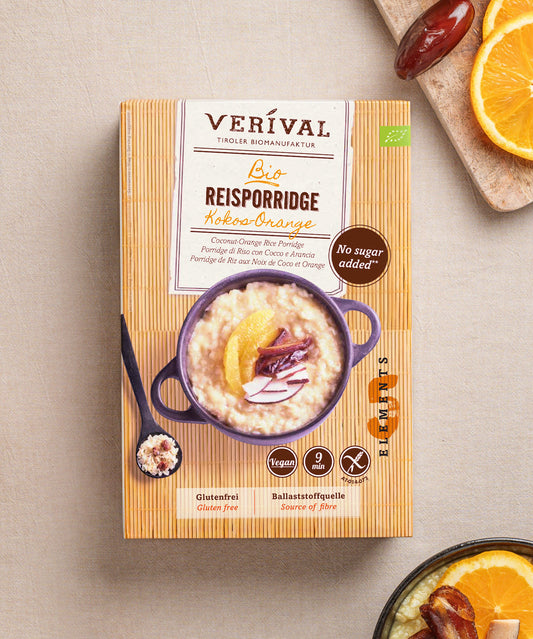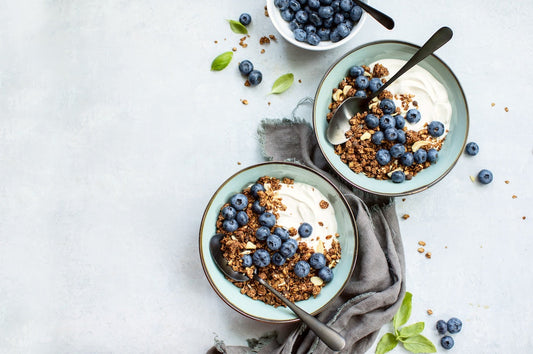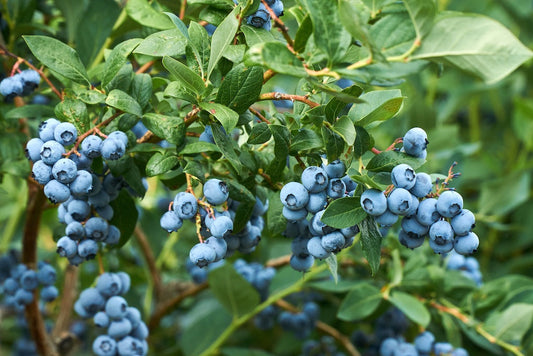Oats are one of the most nutritious types of grain. The grain is full of proteins, vitamins, minerals, dietary fiber and unsaturated fatty acids. It is truly a domestic superfood.
A versatile and nutritious staple, it's hard to imagine our diets without it in its various forms. Whether in the form of oat flakes or oat bran, oats offer numerous health benefits and culinary uses. In this post, we'll take a closer look at these two oat products to help you become more aware of the importance of this super grain in your diet.
What is oat bran?
Oat bran is a nutritional goldmine
Oat bran is a special mill product that is obtained from oat grains and is extremely rich in nutrients. Unlike the husks, which are a by-product of milling, oat bran is specifically geared to the needs of human nutrition.
During the production of oat bran, the aleurone layer (a thin skin that encloses the inner endosperm), the grain edge layers (including the seed coat and fruit skin) and the seedling of the oat grain are processed.
These outer layers of the oat grain and the germ are actually the most nutritious parts. Particularly noteworthy is the high content of soluble fiber, especially beta-glucans, in oat bran. They have the remarkable property of binding water and forming a gel-like substance.
This helps to regulate blood sugar levels and lower cholesterol, which has extremely positive health benefits. In addition, oat bran is rich in important vitamins and minerals such as manganese, selenium and vitamin B1, which support numerous vital functions in the body.
Important: at Verival you can find oat bran in many of our porridges!
By the way: oat bran is usually gluten-free as well, provided that it has not been contaminated with wheat or other gluten-containing grains during processing. If you have a gluten intolerance (celiac disease), it is best to always choose products that are specifically labeled as gluten-free.
Everything you need to know about oat bran
What are oat flakes?
While important parts of the grain are removed when oat flour is ground, the whole grain is processed when oat flakes are made. Different oat flakes are produced from high-quality raw oats in a series of complex steps. The raw oats are cleaned, sieved and heated. The husks are then removed and the oat grains are ready for rolling. There are fine-leafed (tender) and coarser (kernels) oat flakes.
Oat flakes are rich in fiber, which has the unique property of binding water and forming a gel-like substance in the stomach. This helps to stabilize blood sugar levels and slows their rise after eating.
These important beta-glucans can also lower cholesterol levels, especially LDL cholesterol, which is known as “bad” cholesterol. Oats' ability to regulate blood sugar levels and cholesterol makes them an excellent food for a healthy diet.
In addition, oats are an excellent source of important nutrients such as manganese, vitamin B1 and iron. These nutrients are crucial for various metabolic processes and contribute to overall health.
Everything you need to know about oats
Key differences between oat bran and oats
Both oat bran and oat flakes are wholesome and versatile whole grain products. While oat flakes are made from the whole grain, oat bran is composed of the outermost layers of the grain, which are the most nutritious and richest in fiber: the outer layers and the germ bud.
In the following sections, we would like to discuss the differences between the two oat products.
Oats come in different forms – they differ in their consistency and flavor
Nutrient content
Both products have a high fiber content. However, oat bran contains 50 percent more fiber. 100 grams of oat bran contain 15 grams of fiber, while oat flakes contain 10 grams.
The protein content of oat flakes is 13.5 grams, while that of bran is 17 grams.
Oat flakes contain around 370 calories per 100 grams. Oat bran contains around 330 calories. This is mainly due to the higher fiber content of the bran, which provides no energy.
Bran and flakes have the same fat content of 7 grams per 100 grams.
Oat flakes contain about 10 grams more usable carbohydrates than oat bran.
Conclusion: both products have individual advantages. Therefore, neither of the two can be described as “the healthier”.
Taste, texture and cooking time
Oat flakes and oat bran not only differ in their nutrient content, but also in their taste, texture and cooking time.
Oat flakes have a mild, slightly nutty flavor and, depending on their size, a finer or slightly heartier texture. Oat flakes can be quickly processed into a creamy porridge or muesli and are usually cooked in a few minutes. Often, it is sufficient to pour hot water (or milk, oat milk or another plant-based alternative) over the oats and let them soak. There are also quick-cooking oats that are particularly tender and are used primarily for infant nutrition.
On the other hand, there are oat bran. They have a slightly sweet, also nutty flavor and a coarser texture. They need a little more time and liquid to soften and achieve a consistency similar to that of rolled oats.
The choice between rolled oats and oat bran depends on personal preference and preparation methods.
Costs and availability
500 g of oat flakes cost 2.39 euros at Verival.
500 g of oat bran cost around 3.69 euros.
Oat bran and oat flakes can be found in most grocery stores and supermarkets. They are among the basic cereal products and are also available in different forms. They are also sold online. This availability makes it easy to integrate them into your diet and benefit from their health advantages.
At Verival, it is important to us that you receive your oat products quickly. If you order online, you have a wide selection of products that contain rolled oats and also products with a high oat bran content. You can immediately see which muesli and which porridge contains a particularly high amount of rolled oats and oat bran under nutritional information and ingredients. Both are of course also available “pure”.
Health benefits
We would like to shed some light on a few health aspects for you here.
Superfood oats and your digestion
Both oat products are high in fiber and have a positive effect on your digestion. Oat bran is characterized by an even higher fiber content, which makes it even more effective.
When fiber is combined with sufficient water, it swells in the stomach and intestines, increasing volume and creating a long-lasting feeling of satiety while supporting regular bowel movements. It is recommended that adults consume at least 30 grams of fiber daily.
If you want to increase your fiber intake, you should do so gradually and with sufficient fluid intake to avoid possible digestive issues.
Cholesterol and blood sugar levels
Oatmeal and oat bran contain soluble fiber, particularly beta-glucans. They have the remarkable ability to bind with water and form a gel-like substance in the stomach. This causes the digestion and absorption of nutrients, including sugars and cholesterol, to slow down.
In terms of blood sugar levels, this means that the rise after eating is dampened, which is particularly beneficial for people with diabetes. The soluble fiber also helps to lower your cholesterol levels, especially LDL cholesterol, which is known as “bad” cholesterol.
Both oat products are real superfoods in these areas – oat bran is slightly ahead due to its high fiber content. Find out more about the benefits of oat bran on cholesterol.
Oat bran and cholesterol – read more!
Storage and use
The same applies to the storage of oat flakes and oat bran. Both products should be stored in airtight containers, protected from sunlight and at a somewhat cooler temperature, preferably below 20 degrees Celsius. However, storage in the refrigerator is not suitable, as it is too cold here. Also, the temperature of the storage location should not fluctuate constantly. In this way, oat bran and oat flakes will keep for up to 6 months.
Oat flakes and oat bran are extremely versatile in the kitchen and can be used in a variety of dishes. However, they can also be used similarly in recipes.
Oat flakes are the perfect ingredient for your muesli, breakfast porridge, bread or pastries. They give breadcrumb coatings, minced meat dishes and casseroles a special texture. Depending on your needs, wholegrain oats can provide more bite, while delicate flakes change the texture of dishes less. Soluble oats are great for adding carbohydrates and calories to dishes – such as your smoothies.
In contrast, oat bran is coarser in texture and has a stronger nutty flavor that gives it a unique touch. You can get oat bran in the form of coarse semolina or soluble flakes in the supermarket. It can be used in porridge, muesli, baked goods, desserts, and sweet dishes, and also adds a special touch to savory dishes such as patties. Bran is perfect for enriching recipes with extra fiber, but should always be combined with enough liquid to aid digestion.
Oat bran – read more about it!
Conclusion
We hope this post has given you a comprehensive insight into the world of oat bran and oatmeal. Both are extremely valuable whole grain products with rich nutrients and health benefits.
Oat bran scores with higher fiber and protein content, as well as lower calorie content compared to oat flakes. The soluble fiber in both products aids digestion, regulates blood sugar levels, and lowers cholesterol.
The choice between oat bran and oat flakes ultimately depends on your individual preferences and nutritional goals. It is advisable to incorporate both into your diet to benefit from the unique advantages of both products.
Frequently asked questions
What is the difference between oat bran and oat flakes?
Oat bran and oat flakes both come from the oat grain, but they differ in their origin and processing. Oat bran consists of the outer layers of the oat grain and the seedling. It contains a high concentration of fiber, especially beta-glucans. Oat flakes, on the other hand, are made from the inner part of the grain. The main difference lies in the part of the grain from which they are obtained and in their fiber content.
Which is better, oats or oat flakes?
Oats and oats are both fundamentally healthy and offer similar health benefits. However, oats are a form of oats that has already been processed and prepared for consumption. Oats in their more natural form, such as oat bran, have an even higher concentration of fiber and nutrients. The choice between the two depends on personal nutritional goals and preferences.
Can you mix rolled oats and oat bran?
Yes, of course you can mix rolled oats and oat bran to combine the benefits of both. This mix can be a great way to increase the fiber in your diet while taking advantage of the versatility of oats in different dishes.
What is oat bran good for?
Oat bran has a variety of uses and offers numerous health benefits. It is particularly known for its ability to regulate blood sugar levels and lower cholesterol. In addition, oat bran is high in fiber, which promotes digestion, reduces cravings, and supports gut flora. As a result, oat bran can also aid in weight loss.
Does oat bran have fewer calories than oatmeal?
Yes, oat bran has fewer calories than oatmeal. This makes it a lower-calorie option for anyone watching their calorie intake. 100 g of oatmeal contains around 370 calories, while oat bran contains around 330 calories.
Which will keep you fuller for longer, oatmeal or oat bran?
Both oats and oat bran are filling, with oat bran being slightly more filling. The soluble fiber, especially the beta glucan, in oat bran can promote satiety and prevent food cravings, making it a good choice for those who want to watch their weight.


